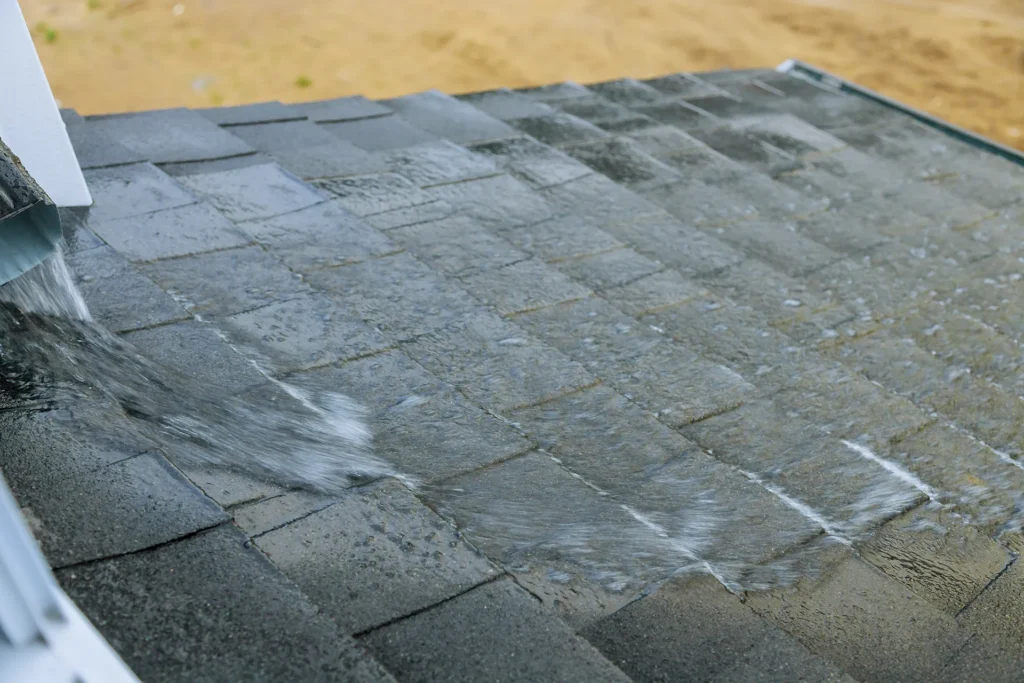Reading Time: mins

Few things are more stressful than discovering water dripping from your ceiling during a storm. Whether it’s a slow, steady drip or full-on water pouring in, acting fast can make a huge difference in preventing further damage to your home.
While calling a professional roofer is the only true long-term solution, there are several smart, immediate steps you can take to protect your home and minimize the damage until help arrives.
The very first priority? Keep as much water out of your home as possible. If the weather allows and it’s safe to do so, covering the leak from the outside with a heavy-duty tarp is your best line of defense.
Important Safety Note: If conditions are dangerous — high winds, heavy rain, lightning, or icy surfaces — do NOT attempt to go on your roof. Stay safely indoors and focus on containing the leak from the inside until a roofing professional can take over.
If you can’t get to the roof (or until you can), the next step is managing the water that’s already getting in.
Relieve ceiling pressure — If water is collecting and creating a bulge in your ceiling, carefully poke a small hole in the lowest point to allow the water to drain into a bucket. This can prevent a much larger, uncontrolled ceiling collapse.
Remember: Where you see water isn’t always where the leak starts. Water can travel along rafters, beams, or insulation before showing up in a different location inside your home.

If you can safely get a good view from the ground or a sturdy ladder, look for:
If weather permits and you feel comfortable:
Tip: Keeping your gutters clean is one of the easiest ways to prevent roof leaks year-round — especially during heavy rain or storms.
Temporary fixes can help buy you some time — but they’re not a permanent solution. The longer a leak goes unaddressed, the more expensive the repairs are likely to be.
A licensed roofing professional can:
Roof leaks rarely fix themselves — and the longer you wait, the more potential there is for costly repairs like mold, structural damage, or ruined drywall.
If you’re dealing with a roof leak — big or small — give us a call today. We’ll get your roof (and your peace of mind) restored in no time.
Copyright © 2025. Provision Roofing & Restoration. All rights reserved.
Website By CGC